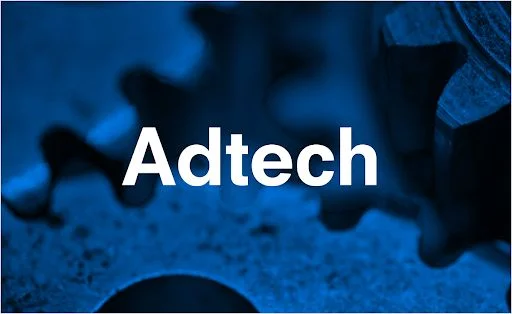What is Adtech? Covering the Basics

Written By
Franni Segal

Learn the basics about advertising technology to understand how advertisers use tools and software to reach their audience successfully with digital ad campaigns.
Adtech, short for advertising technology, is a term to describe any tools or software used by advertisers to reach their audience as well as deliver and measure digital advertising campaigns. As digital advertising has evolved, additional adtech has been added to improve the process.
The buying and selling of digital ads started simply, with a transactional barter between websites and advertisers. As the number of websites and publishers began to increase, it became difficult to sell less premium inventory. Additionally, advertisers needed separate contracts to coordinate each campaign and that was difficult to manage. Soon after, ad networks were created and became an intermediary, making the process more complicated. And with the introduction of programmatic advertising in the early 2000s, the game changed completely.
Programmatic advertising, a key term in ad tech, is the automatic process of buying and selling digital advertisement placements as opposed to more traditional methods of buying advertising. Programmatic advertising uses data insights and algorithms to find the right consumer at the right time and price to serve the ad. This is all enabled through real-time bidding (RTB), the marketplace used to buy and sell ads through auction. Advertising buyers bid on an impression and, if the bid is won, the buyer’s ad is (nearly) instantly displayed on the publisher’s site, without the user being aware of the auction.
Tools and technologies
These are the most common tools and technologies used by publishers, advertisers, ad networks, or ad agencies:
- Ad server: A technology and service that determines instantaneously what ads show up on a website and then serves those ads. Ad servers are used by publishers, advertisers, and ad networks to push their advertisements to desired ad inventory and measure the success and progress of different campaigns. Examples of a popular ad server are Campaign Manager 360 (formerly DCM), Xandr (formerly AppNexus), and TubeMogul.
- Supply-side platform (SSP): A technology platform that helps publishers manage their advertising inventory while maximizing potential revenues. SSPs allow publishers to manage their inventory in real time, prioritizing their own direct buys first (which nets them more money), and then uploading their unsold inventory to the ad exchanges. SSP reporting capabilities also provide insight into what inventory is selling best and at what price point. Some popular SSPs are Google Ad Manager, OpenX, and PubMatic.
- Demand-side platform (DSP): A technology platform that provides inventory buying opportunities from multiple sources. Utilizes real-time bidding capabilities of these sources to access and win inventory auctions. An example of a DSP is Quantcast.
- Data management platform (DMP): A data warehouse used to aggregate and reach relevant audience segments. Once aggregated, this data is easily accessible to marketers for planning, activation/modeling, and validation/measurement. Some popular DMPs are MediaMath, Oracle BlueKai, and Adobe Audience Manager.
- Agency trading desk (ATD): A managed service layer of a larger agency, most often on top of a DSP partner and other audience buying technologies. Manages programmatic, bid-based media, and audience buying for the agency. Some examples of agency trading desks are Xaxis (for WPP), Matterkind (IPG), and dentsu Programmatic (formerly Amnet).
These platforms and services have a shared purpose: to pair audience data with publisher inventory, allowing advertisers to serve the right ads at the right time and place.
Advertising technology benefits
From programmatic advertising to business intelligence, adtech helps advertisers:
- Target and optimize more effectively and efficiently
- Achieve more focused reach
- Maximize return on ad spend (ROAS)
- Gain insights across the marketing funnel
- Improve the measurement and performance of ad campaigns
Adtech industry trends
With the upcoming deprecation of the third-party cookie, adtech is evolving. There isn’t a one-size-fits-all solution for the post-cookie world, but one thing is certain: there is a growing dependency on first-party data in the industry, and an acknowledgement that harnessing this pool of data is the only way forward in the cookieless future. For adtech, preparing for a cookieless future is ensuring that the right data assets are input into technology platforms, so valuable insights can be delivered using technology such as AI, deep learning-based natural language processing, machine learning, and contextual signals.
Learn more
The Quantcast Advertising Platform is a modern intelligent audience platform that is an AI-driven integrated approach for audience planning, campaign activation, performance measurement, and marketing innovation. Find out why Forrester Consulting named the Quantcast Advertising Platform as a “next-generation DSP 2.0” in a recent Total Economic Impact™ (TEI) study.
Share article
Try the Quantcast Advertising Platform

